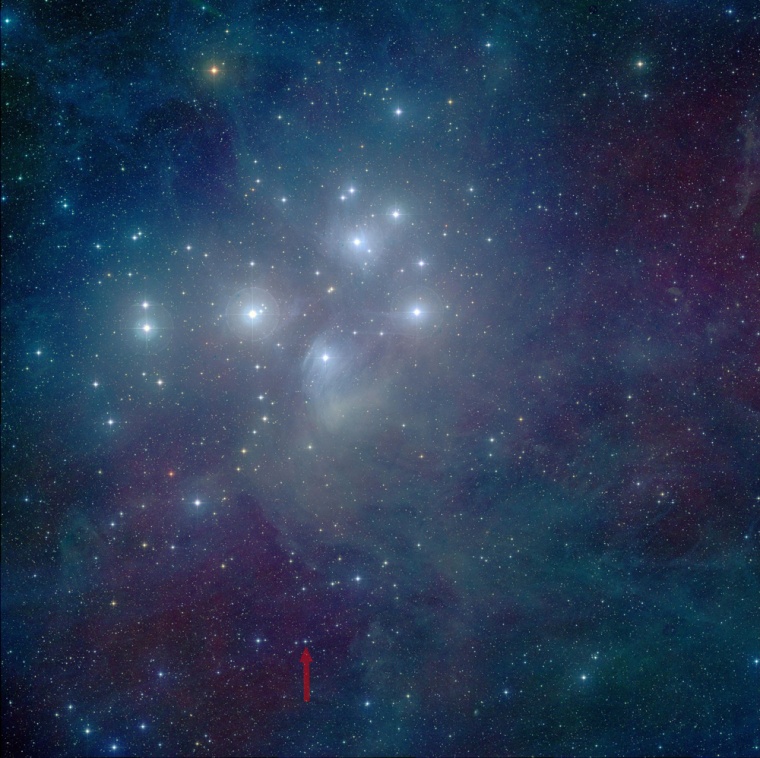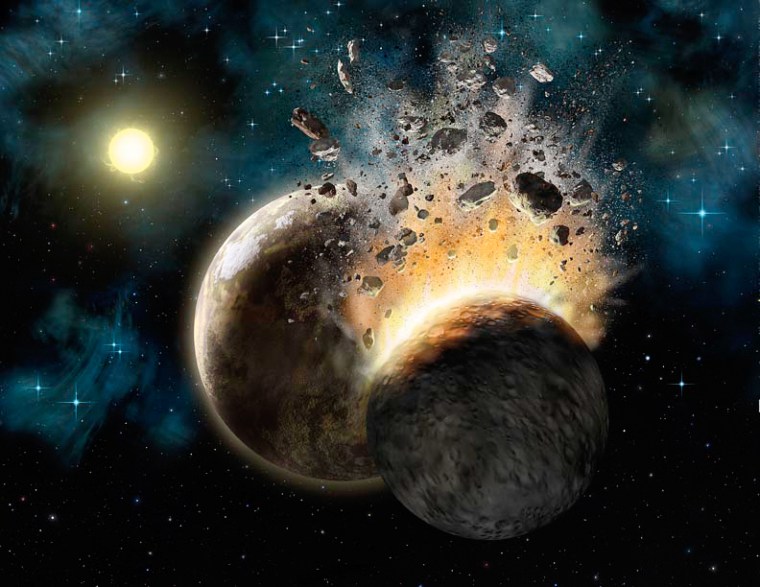Small, rocky planets that could resemble Earth or Mars may be forming around one of the hundreds of stars in the Pleiades cluster, astronomers reported Wednesday.
The star, known as HD 23514, is surrounded by an extraordinary number of hot dust particles that could be the “building blocks of planets.” said Inseok Song, a staff scientist at NASA’s Spitzer Science Center at the California Institute of Technology.
“This is the first clear evidence for planet formation in the Pleiades, and the results we are presenting may well be the first observational evidence that terrestrial planets like those in our solar system are quite common,” said Joseph Rhee of the University of California at Los Angeles, who led the study.
There is “hundreds of thousands of times as much dust as around our sun,” said Benjamin Zuckerman, a UCLA professor of physics and astronomy. “The dust must be the debris from a monster collision, a cosmic catastrophe.”
The team used NASA's infrared Spitzer Space Telescope as well as the Gemini North telescope in Hawaii to detect the dust. The resulting findings are reported in the Astrophysical Journal.
Located about 400 light-years away in the constellation of Taurus, the Pleiades is one of the best-known star clusters and among the closest to Earth. A light-year is the distance light travels in a year, about 5.8 trillion miles.

The grouping has been named the Seven Sisters, after the seven brightest stars, but there are far more than those seven stars in the cluster. “The cluster actually contains some 1,400 stars,” said Song.
HD 23514 is only slightly more massive and more luminous than our sun, but far younger. While our sun is thought to be 4.5 billion years old, the stars of the Pleiades are relative adolescents, with ages in the range of 100 million years.
Infant stars are surrounded by clouds of dust, but this star ranks among the dustiest not-so-young stars in the sky, Song said. The best explanation for the amount of dust would be violent collisions of massive objects. Song said the dust can accumulate into comets and small asteroid-size bodies, and then clump together to form planetary embryos, and finally full-fledged planets.
“In the process of creating rocky, terrestrial planets, some objects collide and grow into planets, while others shatter into dust; we are seeing that dust,” Song said.
“Our observations indicate that terrestrial planets similar to those in our solar system are probably quite common,” Zuckerman added.
Researchers have observed about 200 planets around stars outside our solar system but none are as small as Earth and just one, spotted earlier this year, appears potentially capable of supporting life.
